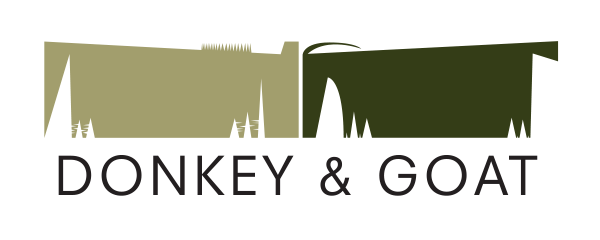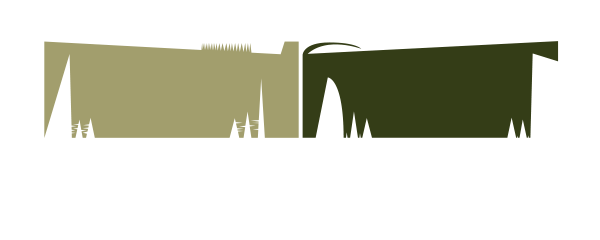Manifesto
On November 2, 2009, the owners wrote a passionate email after a long day’s harvest arguing that an influential Bay Area wine buyer should put our wines on their list even though the alcohol was (naturally) above 14% on this particular wine. While some of her words land feeling dated, 13 years later it still provides a pretty good manifesto for what we do.
“We make our wines for the table, not the cocktail glass. We make Rhône varietals in both colors plus an unusual Chardonnay. We strive to make wine as naturally as possible. We’ve done so since day one. Of late, natural is fashionable, which we do of course appreciate, but the reality is we’ve done this from the start because we feel it makes a superior wine while aligning with our environmental objectives.
We pick early, often weeks before anyone else considers it. Our whites are frequently at and under 13 and some of our reds are at/near 13.5 (both directions). Many of our vineyards are cool climate – we grow Syrah in Anderson Valley in order to get the profile we want at a low alcohol. That said, we also don’t adjust alcohol to meet our goals. We have seen our wines end up higher in alcohol than other wineries in the same vineyard (who picked later) because we let the native yeast do their thing and don’t add water or use reverse osmosis. So, yes we would love to make under 12.5 wines but to make wines naturally at that alcohol in California is challenging. We believe alcohol is a byproduct of our winemaking decisions and we try to live with the repercussions of our decisions rather than cover them up after the fact.
When it comes to dogma, the road to hell is paved with good intentions.
We have vineyards that are organic and even have a new one that was effectively abandoned – closer to the ideas of Masanobu Fukuoka. Biodynamic is very interesting to us but we are hesitant to adopt a management system that is dependent on copper sulfate due to health concerns. We are not alone in these. Alice Feiring blogged about Eric Texier’s thoughts around this last Feb. We also strive to find vineyard managers who share our overall concern for the environment and desire for growing natural wine grapes. We struggle with doctrine that ignores excess and risks simply because it was determined to be okay for THAT doctrine. The religious analogies are so plentiful that I won’t bother but I’m sure you get the idea. When it comes to dogma, the road to hell is paved with good intentions.
In the winery, we are extremely careful with our winemaking to ensure we encourage but do not manipulate the wine’s expression of origin (terroir and varietal).
In the winery, we are extremely careful with our winemaking to ensure we encourage but do not manipulate the wine’s expression of origin (terroir and varietal).
In the winery, we are extremely careful with our winemaking to ensure we encourage but do not manipulate the wine’s expression of origin (terroir and varietal). We also make decisions to ensure our wines belong on the table with food and not in cocktail glass in advance of anything edible. That means we pick based on flavor and acid. We ignore brix. We picked Syrah this year at 21.5 brix and it is gorgeous. We also picked Syrah at 23 brix and it is equally gorgeous. In both cases, we were examining acid structure and flavors.
We ferment all wines (red and white) in wood vats. This is so key and no one is talking about the vast amounts of small lot wine made in plastic in this country. We abandoned plastic in our personal lives when we had our (first) daughter and discovered the extensive research around chemicals like BPA leaching into liquids. We NEVER considered a square plastic bin for fermentation because it’s plastic and it’s entirely the wrong dimension for vinification and IT IS plastic. But look in most US wineries and you will find a square plastic vat with fermenting must.
We add nothing at the vat after crush save the occasional minuscule dose of SO2 if we have a rainy year where rot is an issue. That means no enzymes to enhance color and extraction, no tannin, no commercial yeast, no nutrients to feed the super yeast, and 95% of the time no SO2 (until after MLF completes). We can control temperature via manipulating ambient temperature with a refrigerated container and warm rooms within the winery. That’s it. For the labor, it’s all manual. Picking. Sorting. Foot stomping. Punch down. Our hands are in the wine each day and we taste each day. The only time we’ve ever had a problem was in 2004 when we inoculated a few vats as an experiment to prove our wild yeast preference. The inoculated vats had stuck fermentations and we later dumped the wine rather than fall down the slippery slope of additions to correct additions (we dumped the equivalent of 50 cases).
Our hands are in the wine each day and we taste each day
That is one of the problems we have with inoculations. Winemakers choose cultured yeast for various attributes that include performance and aromatic profile. But the lab yeast needs huge amounts of food. So the regimen becomes, to kill the microbial life with SO2 & Lysozyme, add super yeast, and add vitamins and nitrogen (DAP or diammonium phosphate being very popular) to feed these hungry microbes. Then hope the yeast doesn’t put any off aromas like H2S because of the imbalance in their diet. If they do, add Copper. Then rack and filter and add more SO2… it never stops. And don’t get me started on the great irony of adding vast amounts of DAP to the vat to feed yeast. Guess which yeast also LOVES DAP and for that matter any additive rich in thiamin. Read the ingredients on most wine additives and you’ll see thiamin at the front. That would be Brettanomyces, the dark angel.
Back to us, we complete primary with just wild yeast sometime near the end of the year although in warmer years like this one I expect to be done going into December. MLF is also natural or with wild bacteria. This is easy for us because we do not buy ANY new oak barrels. We buy a supply of 1-year-old barrels each year from a single source (relevant for cleanliness) and rotate them in. Our lots see from zero to 35% one-year-old barrels. As a result, we have plenty of Lactobacillus in our used barrels so again, no inoculation, no nutrients, and no problems. We have one wine (our Brosseau Vineyard Chardonnay) that does not complete and rarely starts MLF. We do not kill the wine with SO2 and we do not filter. The pH of the wine is in the 3.1-3.2 range which is a natural prohibitor of MLF and we’ve never had a problem with bottle fermentation and have been making this wine since 2003. We do make it in an unusual manner. Again back to France. Eric taught us a trick he uses in warmer years. Pick the vineyard twice and blend to lift acidity. It’s that simple. The first pick happens to be hugely unusual at veraison but still, pretty simple.
The rest I’ll just list and save you the rationale given my dense email. We stay sur lie until the wines tell us not to (no prophylactic racking or micro-oxygenation). We do not clarify or heat/cold stabilize and we almost never fine or filter. On the occasions we have, we’ve labeled accordingly.
I do hope if nothing else I’ve managed to convey we are hugely passionate about what we are doing and why we are doing it.
Join Our Community
Get 10% off your first online order when you join our mailing list!

